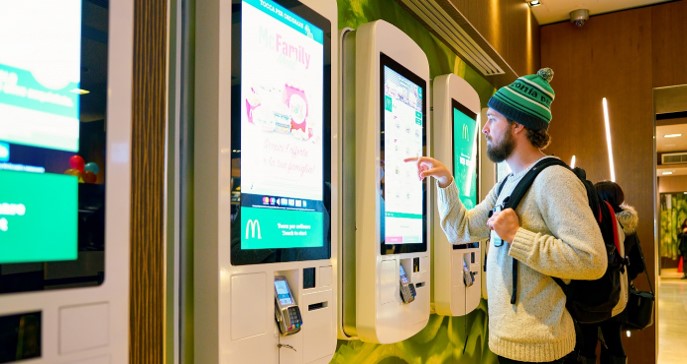The covering of buttons in the urban space and the disinfection of handles and door knobs in housing estates are only the beginning of the fight against “touch”.
The business world has long contemplated how to reduce human contact in factories, transport and trade. Looking at the consumer side: since touch, as a potential source of infection, has taken on a pejorative meaning, the use of touchscreens, e.g. at McDonalds, is a sign of carelessness (although the hygiene problem with touchscreens was already present before COVID).
One of the countries that responded most strongly to the challenge of “contact-free” functioning is Japan. The main reason was the ageing society and labour shortage.
At a time when regular screen cleaning with disinfectants is a half-measure, big players such as Rakuten and the Uniqlo fashion brand have introduced solutions that may prove to be pioneering in the context of current realities. They are based on voice control technology, facial expression recognition, applications and QR codes. All this to reduce consumer concerns about contagion.
One of the most interesting inventions is the idea of a screen based on ultrasound, thanks to which we do not touch, but feel what is on the screen (in places with high ultrasound intensity).
Although these solutions seem to be the niche for today, being a retail brand with ambitions to be socially involved, it is worth following this trend. Especially in the food category, where touchscreens have become very popular… and at the same time problematic.
Source:
https://warc.com/newsandopinion/news/the-growth-of-touchless-tech-and-humanless-systems/43816
https://kuchnia.wp.pl/ekrany-dotykowe-w-mcdonalds-mialy-byc-ulatwieniem-a-moga-byc-zagrozeniem-6460155742472321a

